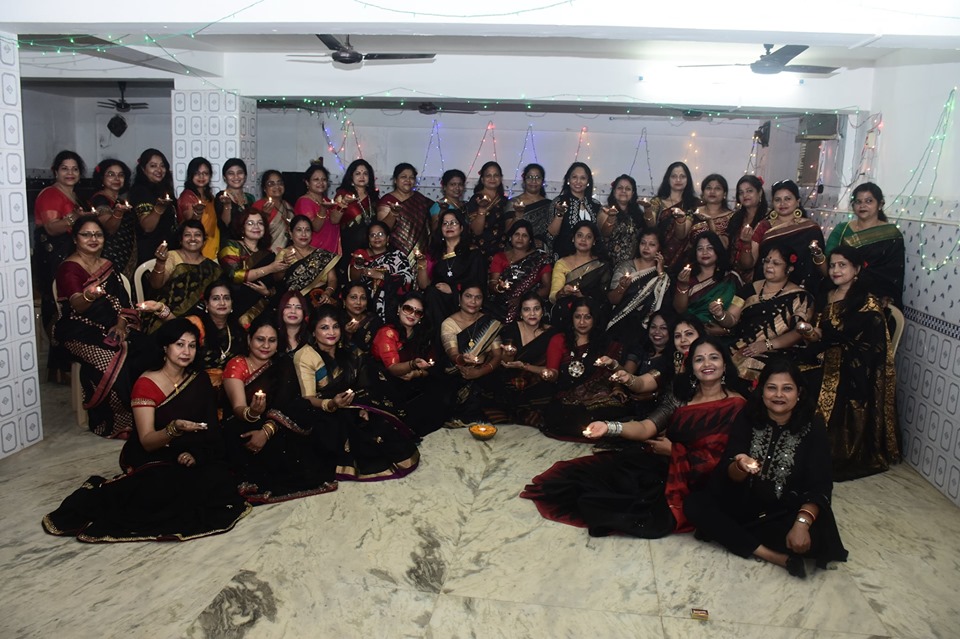Kali is the destroyer of time or ‘Kala’; she too is the goddess of death and destruction having her abode in the cremation grounds. To the ‘Shaktas’ she is ‘Parambrahma Swarupini’; identical with the supreme Brahman, creator of the universe, its sustainer and ultimately its destroyer
Bhubaneswar: As the entire nation is celebrating the festival of lights Sunday, very few know that Kali puja has another dimension in Odisha.
Kali is the destroyer of time or ‘Kala’; she too is the goddess of death and destruction having her abode in the cremation grounds. But to the ‘Shaktas’ she is ‘Parambrahma Swarupini’; identical with the supreme Brahman, creator of the universe, its sustainer and ultimately its destroyer. The ‘Markandeya Purana’, ‘Devi Bhagavata’, ‘Kalika Purana’ and other books describe her as the ‘ultimate mystery of the universe’.
Even if she is the destroyer of Mahisasura (as Durga), Shumbha, Nishumbha, Chanda, Munda, Raklavirya, she is also the compassionate Mother. The two mudras in her right hands— abhaya (protection from fear) and vara (granting of boons)— and the raised blood-smeared sword in one of her left hands with the freshly severed head of a demon dangling from the other hand; three eyes standing for the sun, the moon and fire (Agni) make her the most complex symbol of love, compassion and terror.
Kali puja is also known as Shyama puja or Mahanisha puja. Celebrated on the new moon day of the Hindu month Kartik; states like Odisha, West Bengal, Bihar, Assam and Tripura besides the neighbouring country Bangladesh, enjoy it with ardent fervour. It may be mentioned here that the puja continues in parallel to the Lakshmi puja.
Orissa POST interacted with servitor Ravi Bhaina at Sainik School kali temple in Bhubaneswar about the practices and spirituality associated with the puja.
“Prayers are offered to the goddess for elimination and destruction of ego and negativity which obstruct spiritual growth. The deeper connotation of goddess Kali’s slayer form is, one who slays all that is an obstruction to our spiritual development,” he said. Tantrics pray to mother Kali for annihilation of ignorance and all enemies within oneself as we all perceive the world outside from what lies within us, he mentioned. ‘Amavasya’ is the night of darkness and therefore, Deepawali is celebrated to eliminate the darkness through lights and crackers as the blessings of goddess Kali, concluded Ravi.
And if it is the occasion of Kali puja, how can one forget the Pataneswari temple. The Pataneswari temple of Sambalpur was built by Balaram Dev, the first Chauhan ruler of Sambalpur in the last part of 16th century. It consists of a sanctum with an enclosed circular count. Goddess Kali is worshipped in the temple of Pataneswari. No less is Kali puja at Charampa Bazaar in Bhadrak. It is a special attraction and the tourists throng from across the state to witness the festival. The puja here is accompanied by a ‘mela’ wherein vendors from not just the state but from West Bengal, Bihar, Jharkhand, Assam, Manipur and Uttar Pradesh set up stalls to exhibit and sell their handicrafts.
 FOR A POLLUTION-FREE CELEBRATION
FOR A POLLUTION-FREE CELEBRATION
BHUBANESWAR/PURI: Several awareness programmes were conducted at the capital city of Bhubaneswar and the holy city of Puri to educate the denizens about the need for an eco-friendly celebration of the festival of lights. Former female students of Utkal University, Bhubaneswar, all draped in black sarees, appealed citizens for a cracker-free Diwali. Nibedita, one of the participants, said, “The black is symbolic; indicating pollution. Through our attire and coming together, we plan to create awareness for an eco-friendly Diwali.”
Similarly, some staff of a Puri-based hotel took out an awareness rally on the beach, carrying a banner and asking citizens to go green this Diwali.






































